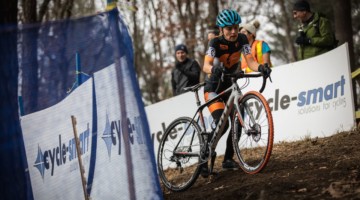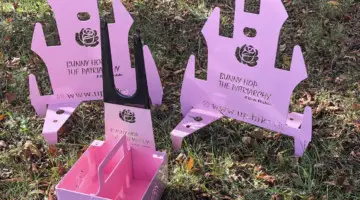With Xennials who grew up on Oregon Trail hitting prime bikepacking age, we wanted to share this cool new opportunity. Although it is not the Oregon Trail with caulked wagons and Chimney Rock, the Oregon Timber Trail is an opportunity to ride the state of Oregon from north to south on mixture of singletrack and off-road trails.
by: Oregon Timber Trail Association
The Oregon Timber Trail is an iconic 668-mile backcountry mountain bike route spanning Oregon’s diverse landscapes from the California border to the Columbia River Gorge. Work developing the trail and route resources has been underway for eighteen months and this week the world gets to see the fruits of that labor. Today we have launched the official route and you can download it all here, http://oregontimbertrail.org/r
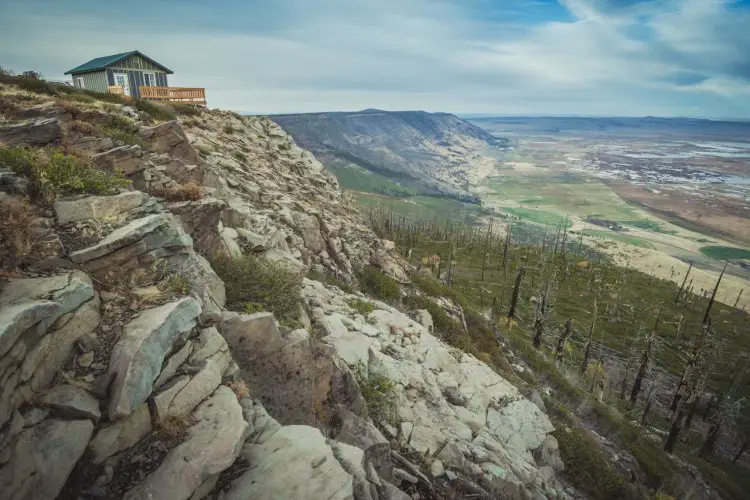
The Oregon Timber Trail offers 668 miles of vistas and memorable bikepacking trails. photo: Gabe Amadeus
The OTT, (Oregon Timber Trail), is a world-class bikepacking destination and North America’s premier long-distance mountain bike route. It runs south to north through a variety of mountain bike trails divided into four unique tiers segmenting the state like a layered cake. The Oregon Timber Trail can be sliced into as large a piece of that cake as desired; the route and terrain is suitable for a wide range of intermediate to advanced cyclists. The Oregon Timber Trail is inspired by the Pacific Crest Trail and other hiking trails in the National Scenic Trail system, but what sets the OTT apart is that it’s designed with mountain biking in mind and consists of more than 50 percent singletrack.
Riders depart from the California border, just outside of Lakeview, the highest town in Oregon. Within the first ten miles, riders will crest 8,000 feet and get a view of the ride north. Ahead, the Fremont Tier is 190+ miles long, followed by the Willamette Tier at 140+ miles, then the 110+ mile Deschutes Tier, and finally the Hood Tier at 200+ miles. Dip your tires in the Columbia River, lay in the grass, and raise a toast to yourself — you just rode a mountain bike across the state of Oregon.
Highlights of the OTT
- Four unique tiers and landscapes
- Diverse backcountry singletrack
- Alpine lakes and quiet campsites
- Countryside steeped in native legends and settler’s lore
- Old growth groves and vast prairies
- Bubbling trout streams and herds of antelope
- Historic pack routes and rowdy flow trails
- Ghost towns and backwoods diners
- 91% unpaved, 51% singletrack
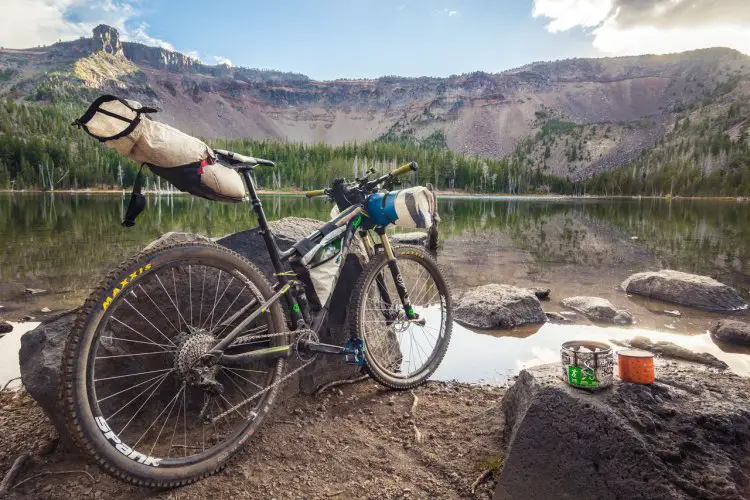
Alpine lakes are among the sights you will enjoy on the Oregon Timber Trail. photo: Gabe Amadeus
Stay in touch
Follow along with updates on the Oregon Timber Trail at the links below.
Web: OregonTimberTrail.org
Facebook: www.facebook.com/OregonTimberT
Instagram: www.instagram.com/oregontimber
Trail Notes
Ride the route in its entirety for an adventure of a lifetime, or spread it out over a few years riding one tier at a time. The Tier program is an important aspect of the Oregon Timber Trail. While we want the entire 670 miles to be an aspirational goal for riders, the reality for most riders is shorter tiered options without the need for a long vehicle shuttle or extended time away from work and family.
Fremont Tier
The Oregon Timber Trail aptly starts in the middle of nowhere on the California border. You’ll leave Oregon’s highest town and traverse the 150 mile Fremont National Recreation Trail. You’ll be rewarded with stunning views from Winter Rim, a feast at the legendary Cowboy Dinner Tree, and have the opportunity to stay at a number of primitive fire lookouts.
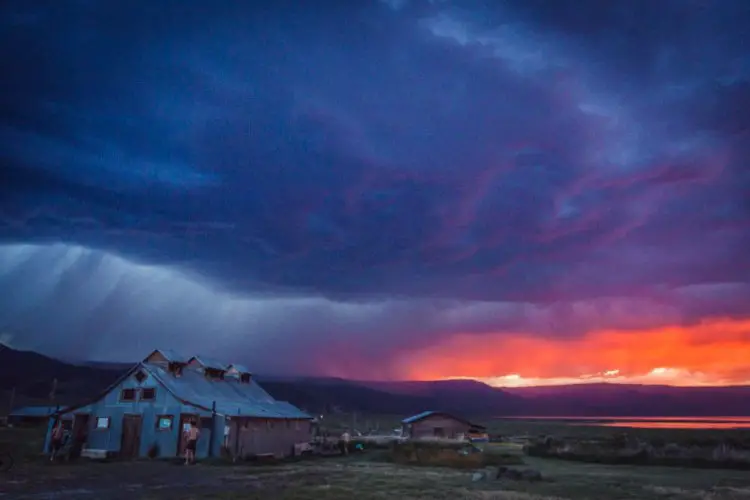
Four days of trail clearing, camping and riding on the stunning Winter Rim. photo: Gabe Amadeus
Willamette Tier
The Willamette Tier is markedly different from the Fremont Tier. The dry deserts, sparse ponderosa forests and wide open rangeland give way to dark, verdant, and loamy forests as soon as you crest the Cascade Range. You’ll follow feeder streams and springs of the Willamette River’s Middle Fork for much of this tier, putting your water scarcity worries at ease—at least for now.
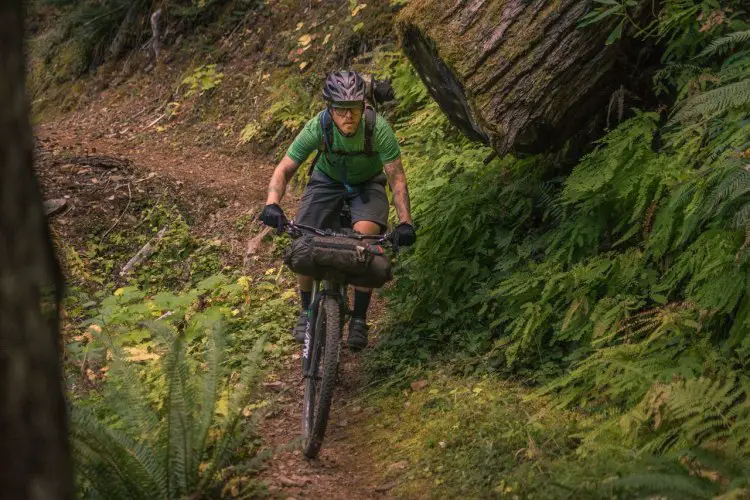
Epic trees highlight the epic Oregon Timber Trail in the Willamette Tier. photo: Gabe Amadeus
Deschutes Tier
The Deschutes Tier takes you back over to the dry, volcanic eastern flank of the Cascade Range. Bend is famous for its large network of world-class mountain bike trails and the Oregon Timber Trail takes advantage of them as it leaves Waldo Lake and winds its way through the Cascade Lakes region and around Mt. Bachelor.
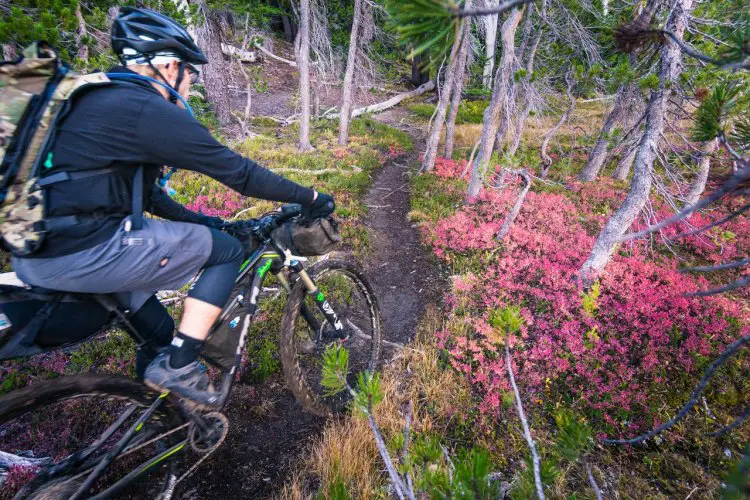
The Deschutes Tier features mountain bike trails and some natural beauty. photo: Gabe Amadeus
Hood Tier
As you head into the Hood Tier you may think you’re on the final stretch—that is if you haven’t looked at the elevation profile. The Hood Tier takes you up and down, across countless backcountry ridges and streams, first teasing you with imposing views of Mount Jefferson and eventually Mount Hood itself. The Old Cascade Crest is steep and rewarding, eventually dropping you near Detroit Lake and up to Olallie Lakes through the Breitenbush Hot Springs valley.
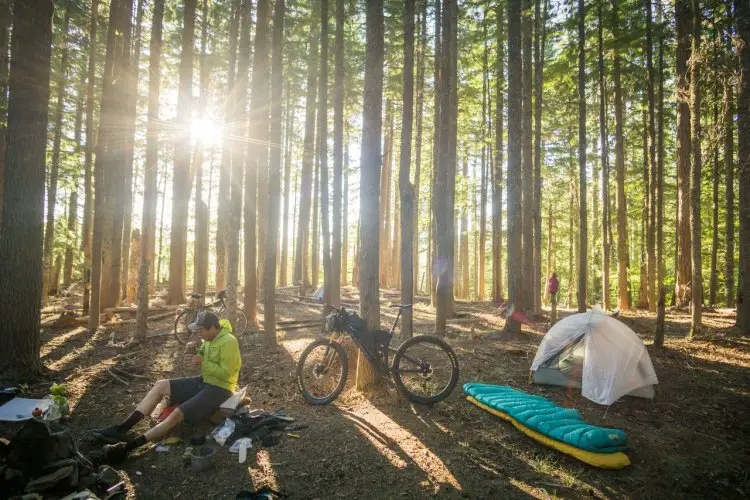
Nestled up on Mount Hood’s northeastern flank are a series of ridges and pocket lakes perfect for some short (and steep) bikepacking overnights. photo: Gabe Amadeus
About the Oregon Timber Trail Association (OTTA)
Dedicated to stewardship, education, community, and quality trail experiences throughout the Oregon Timber Trail corridor. The OTTA represents the interests of the past, present, and future users of the Oregon Timber Trail. The OTTA Board of Directors is comprised of mountain bikers, environmental stewards, and bicycle industry leaders drawn from across the state of Oregon with the objectives and purposes of:
Developing, promoting and maintaining a singletrack bicycle route and associated network through the Cascade Mountain Range from the California border to the Columbia River;
Encouraging sustainable cycling-related economic development in the rural communities along the Oregon Timber Trail;
Supporting the land management agencies and private landowners who manage/own lands through which the Oregon Timber Trail passes.

























